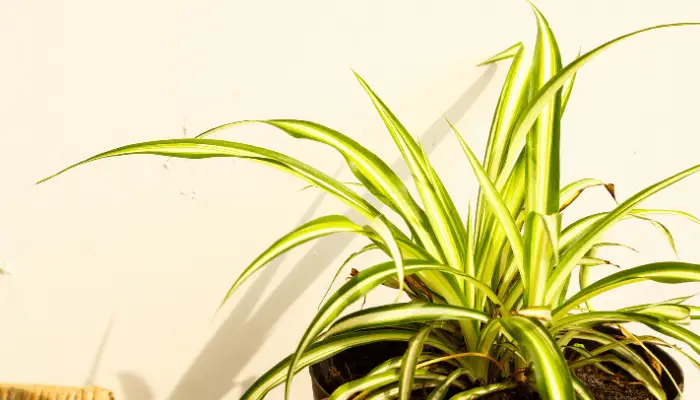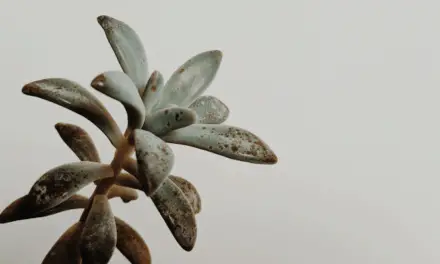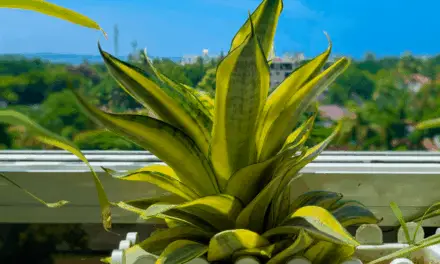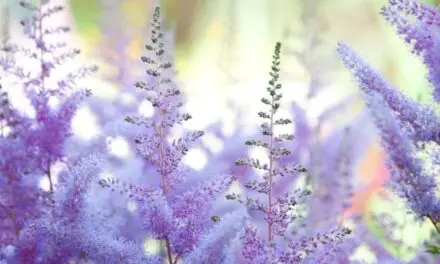Spider plants are beautiful and easy-to-care-for houseplants.
They provide lots of oxygen and help clean the air of toxins and other pollutants.
But sometimes you may get some browning on the leaves.
It’s not very aesthetic when this happens but it does occur from time to time for various reasons.
Like many plants, spider plants require pruning from time to time.
Table of Contents
Can I Cut The Brown Tips Off My Spider Plant?
Yes, it is recommended to cut the brown tips off your spider plant.
Using sharp scissors to remove the browned tips of leaves helps to spruce up your plant and keep it looking healthy and vibrant.
Just try to angle your cut at an angle so you can mimic the natural sharp-pointed leaves of the spider plant.
Why Is My Spider Plant Turning Brown At The Tips?

Before you begin trimming your spider plant, it’s important to understand why the leaves are browning.
Be sure to inspect the leaves and, if needed, the root structure along with sun exposure, watering, and fertilizer.
Related Article: How To Make Your Spider Plant Bushier
The following are some of the most common causes of brown leaves:
Overwatering Or Underwatering
The most common problem with brown leaves on a spider plant is water.
If it is being watered too much or if the pot has standing water, it could be root rot.
If it’s taken over the whole root system, there’s little you can.
When underwatering is the issue, the leaves will dry up, complete with brown tips and edges.
Only water when the soil is dry to the touch and there’s no water sitting in the drainage dish.
Too Mush Direct Sunlight
Spider plants love the shade and indirect light.
So, if it gets too much sun, it can burn the leaves and make them turn brown.
This is because water gathers on the tips of the leaves at night.
When the sun shines on them, the dew acts as a magnifying glass and turns the leaves brown, also known as sun scalds.
A lack of sunlight can also cause browning, so give the plant four to six hours per day of indirect sunlight.
Not Enough Humidity
Spider plants thrive best in humid conditions.
Arid, desert-type climates, and wintertime lack sufficient humidity.
Storing your spider plant in the bathroom is a great way to get the proper amount of moisture.
You can also put the plant next to other plants or keep a humidifier nearby.
Over-Fertilization And Chemical Build Up
Chlorides and fluorides are often present in tap waters and there is much debate as to whether or not they harm plants.
If watering your spider plant with tap water it is recommended to fill an open container and let it sit overnight.
The chlorine will evaporate and water will be at room temperature so it will not shock your plant.
You can also use distilled or filtered water for your spider plant.
This should help keep chlorine, fluoride, boron, and other harsh substances from building up in the soil.
Fertilizer can be harmful too.
As a general rule, don’t give your spider plant more fertilizer just because you noticed the leaves turning brown.
Lack of nutrients could be the culprit, but don’t use Fertilizer as your go-to solution for brown leaves.
You can add new soil to the pot to ensure your spider plant is getting enough nutrients.
Over-fertilizing your spider plant can cause plant toxicity and may even lead to root and leaf damage.
If you think you have over-fertilized it’s best to repot your spider plant in fresh soil.
Leaf Blight
If you see light lesions turn brown over time, then the spider plant has a condition known as Bacterial Leaf Blight.
This often occurs in extreme conditions where heat and humidity cause yellowing and browning on the margins of the plant.
Increasing airflow around the plant will not only prevent leaf blight but will also cure it.
Clipping Away Brown Leaves
Take a scissors or pruning shears and disinfect them.
You can use a mild household cleaner, white vinegar, rubbing alcohol or a bleach solution.
You can spray or rub this on with a piece of cotton.
Allow your disinfected shears to dry.
Then, cut the blades from the center of the plant at an angle.
This will prevent injury and help the leaves retain their sharp shape.
It also helps prevent the spread of leaf blight to other areas of the plant.
Whenever you see dead leaves or brown parts of leaves it’s okay to cut them off right away.
And in general, you should be pruning your spider plant each springtime to keep it vibrant and healthy.




